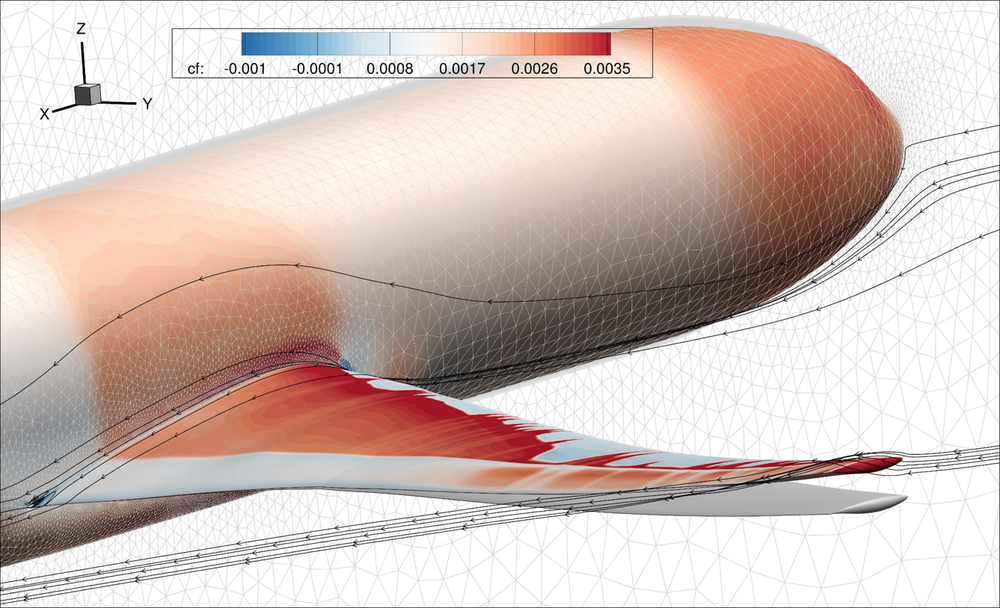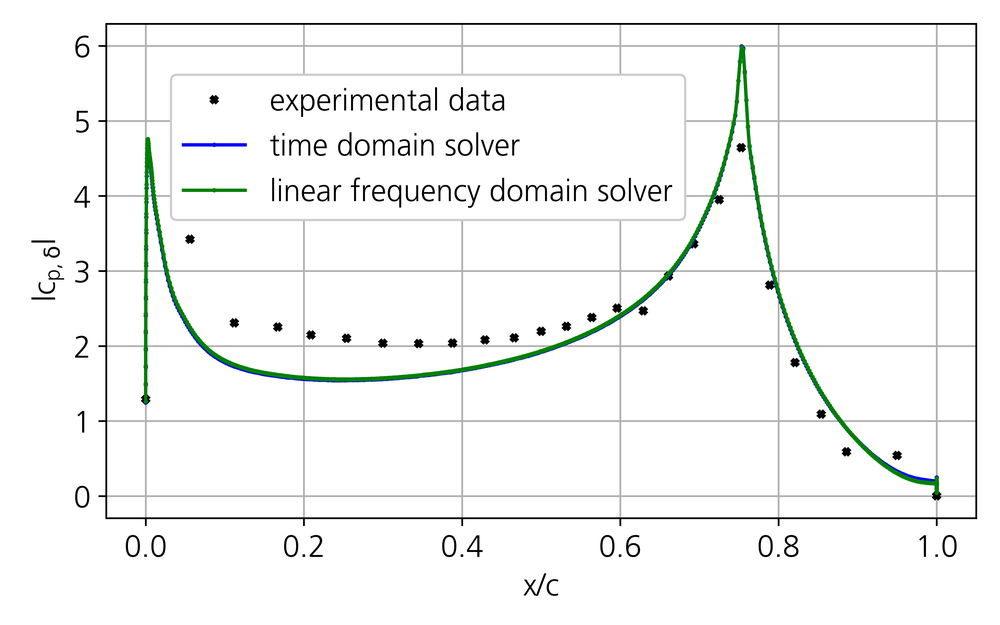Unsteady Aerodynamics



The topic unsteady aerodynamics plays a critical role in aerospace engineering, exploring the intricate dynamic nature of the aerodynamic forces and moments generated as flexible aircraft or rotorcraft move through fluid flow. Gaining insight into unsteady aerodynamics is essential for designing safer, more efficient aircraft and predicting their dynamic performance in real-world conditions. The research topics focus on modeling, method development, and model validation.
Modeling
At the core of the discipline of unsteady aerodynamics lies the challenge of modeling. Dynamic aeroelastic applications require a comprehensive description of the unsteady aerodynamic phenomena, with flutter—an unstable potentially catastrophic phenomenon—taking center stage. The complex interplay between aerodynamic forces and structural dynamics demands sophisticated models capable of accurately capturing the subtle interaction between airflow and structure.
Unsteady aerodynamic modeling has evolved from simplistic two-dimensional strip theory and three-dimensional panel methods to the more complex computational fluid dynamics (CFD), adaptable to both fixed- and rotary-wing configurations.
These improvements in modeling enable a deeper understanding of aerodynamic behavior, particularly in transonic regimes where traditional methods struggle due to complex flow phenomena like unsteady transonic shock-induced separated flows. An example of such computations is illustrated in Figure 2, where the unsteady flow corresponding to a buffet condition over a wing in the transonic regime is simulated using hybrid RANS/LES simulations (HRLM). Additionally, there's a growing interest in accounting for aerodynamic and structural nonlinearities, shedding light on phenomena such as limit cycle oscillations.
Method Development
Method development in unsteady aerodynamics is characterized by a pursuit of precision and versatility. Activities focus on the analysis of flows at high Reynolds numbers in both the subsonic and transonic regimes. Some of the methods developed for these types of flows involve integration of local correlation-based transition modeling into the Reynolds averaged Navier-Stokes (RANS) equations.
Gust and turbulence encounters, essential considerations for aircraft safety, require meticulous methods to simulate discrete gusts and continuous turbulence accurately. The linear-frequency-domain (LFD) solver has been developed and implemented into the DLR CFD TAU code, emerging as a standard high-fidelity and efficient modeling approach for flutter boundary and linearized loads computation in the European industry. The team also investigates the nonlinear effects arising from encounters with turbulent flows of high amplitudes, extracting features that are not captured by linearized methods. Additionally, the integration of the effects of rigid body and flexible structural motion, along with flight control systems, into high-fidelity models underscores the need for comprehensive methodologies capable of addressing diverse challenges.
Aeroservoelasticity emerges as a pivotal concept, bridging aerodynamics, structural dynamics, and control systems. Its significance in modern aircraft design cannot be overstated, with lightweight structures and advanced flight control systems pushing the boundaries of traditional methodologies. A particular focus is put on the development of new techniques to generate high-fidelity aeroservoelastic state-space models, also valid within the transonic regime, which facilitate the analysis and design of complex controllers, albeit amidst challenges posed by nonlinearities and parametric uncertainties. Ultimately, the resulting high-fidelity aeroservoelastic models enable the design of controllers for gust load alleviation or active flutter suppression, thereby reducing uncertainty stemming from the unsteady aerodynamic model.

Additional activities focus on more analytical approaches, including modeling methods for weak nonlinear systems, parametric linear models, and flutter solvers.
Model Validation
Model validation acts as a crucial benchmark for assessing the effectiveness of theoretical concepts in real-world applications. Despite notable advancements in modeling and method development, validation remains a critical yet complex task. Given the inherent uncertainty associated with unsteady aerodynamic models, robust validation methodologies are essential to maintain confidence in their predictive abilities.
One specific area of research focuses on the unsteady aerodynamic characteristics of natural laminar wings, also in wind-tunnel conditions. This involves considering the notable impacts of static aeroelastic deformation and the turbulent wedges caused by possible contamination. Another area of interest centers on exploring the unsteady aerodynamics of flying-wing configurations, particularly those characterized by vortex-dominated flow at high angles of attack.

An additional activity focuses on the analysis of the unsteady aerodynamics produced by control surfaces, which is an important and complex topic, especially under transonic conditions.

Unsteady aerodynamics represents a fascinating frontier in aerospace engineering, providing insight into the intricate relationship between airflow and aircraft motion. As modeling techniques advance and validation methodologies become more refined, the pursuit of a deeper understanding of this dynamic interaction persists, fueling innovation and shaping the future of aviation.
